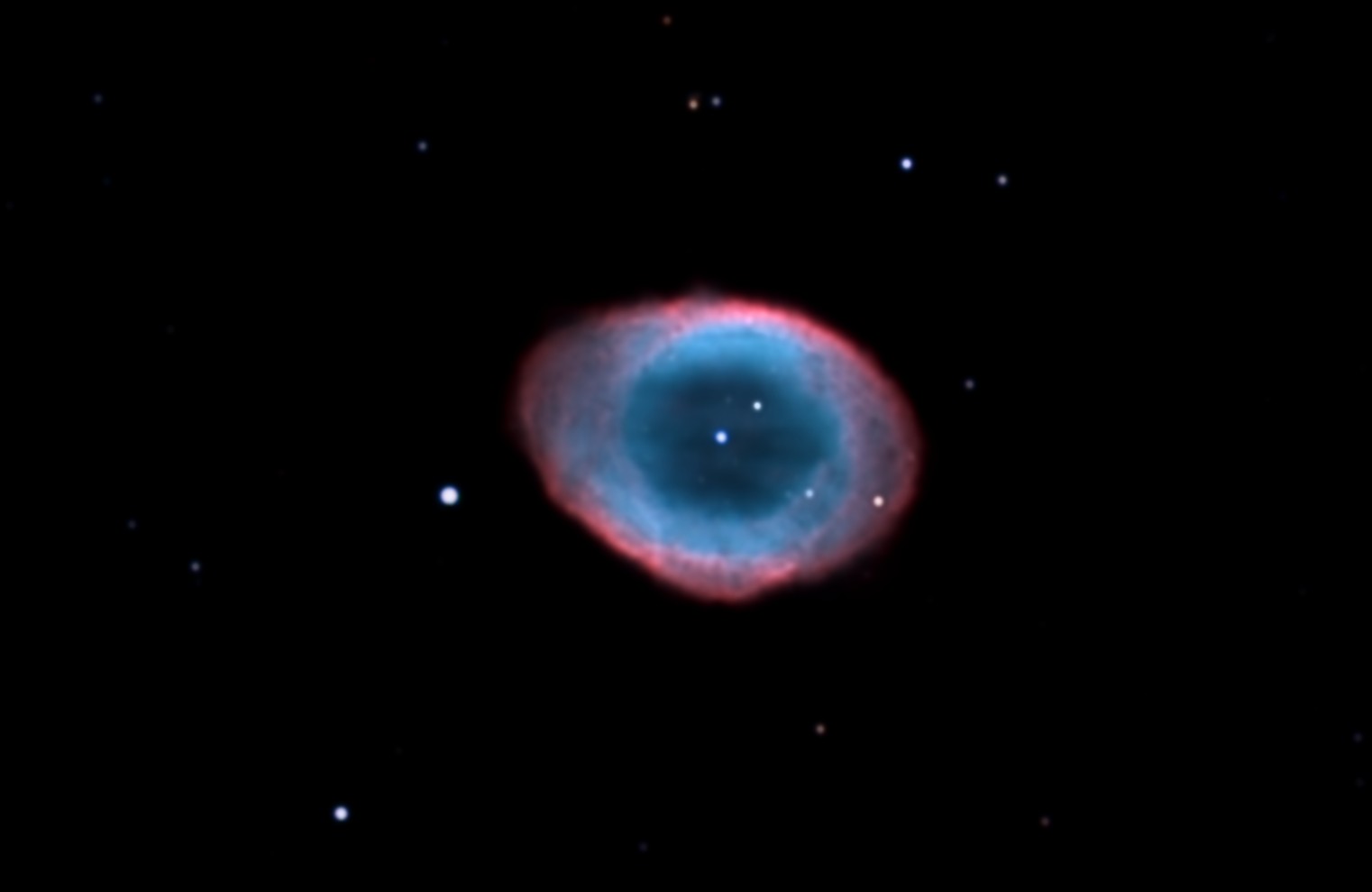
This beautiful ring nebula in Lyra is actually an expanding shell of gas thrown off explosively by a dying star, which is visible at the center of the ring. The gasses forming the ring glow (similar to a fluorescent light) as a result of ultraviolet radiation from the central star. The different colors of the nebula result from the diverse physical conditions of the gas where the emission originates. For example, the center of the ring appears blue from emissions of helium close to the star, because helium requires higher-energy photons to ionize than hydrogen or oxygen, and the conditions for emission by helium primarily occur near the star. The nebula shines at magnitude 8.8, while the central star is a faint magnitude 15.29. It is located about 1500 light-years away. The nebula is approximately 500 times the size of our solar system. The gasses of the nebula are expanding at a radial velocity of about 12 miles per second.
French astronomer Antoine Darquier de Pellepoix is credited with discovering the ring nebula in 1779. M57 was the first planetary nebula found, and it was the second planetary nebula added to the Messier catalog. The ring nebula is a so-called "planetary nebula", although it has nothing to do with a planet. Nebulae of this type were named "planetary nebula" in the 18th century because these nebulae resembled the disk of a planet in the telescopes of the time, and the name has stuck to this day.
This is an LRGB composite CCD image taken with an SBIG STL-11000M CCD and a RCOS 24-inch telescope. The image was taken from Mount Lemmon. Adam Block is conducting a nightly observing program at the Mount Lemmon SkyCenter that is open to the public. I highly recommend the University of Arizona public outreach programs at the Mount Lemmon SkyCenter. You can view and understand the night sky with an expert astronomer to guide you on an adventure under the stars. The RCOS 24-inch telescope that I used to take this image is dedicated to that program, and some of their astronomy camps also include opportunities to observe with the 61-inch Kuiper Telescope. The 61-inch Kuiper Telescope is located on nearby Mt. Bigelow. I attended an image processing workshop led by Adam Block at the Mount Lemmon SkyCenter sponsored by the University of Arizona, and this image was taken and processed during the workshop.
M57 (NGC 6720)
Constellation: Lyra
RA: 18h 53m 35s Dec: +33d 01' 47" (J2000)
August 22, 2008
Image by Sid Leach and Adam Block
Mt. Lemmon, Arizona
Recent Images.
Complete list of images.
Description of equipment used to acquire images.
Home
Feedback and comments should go to Sid